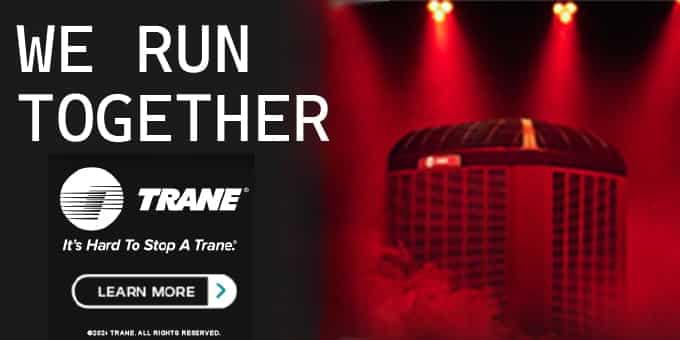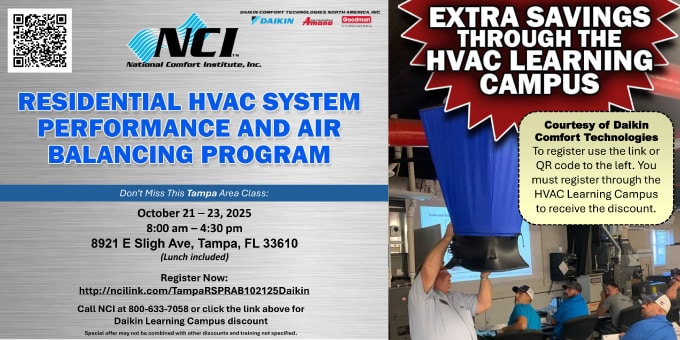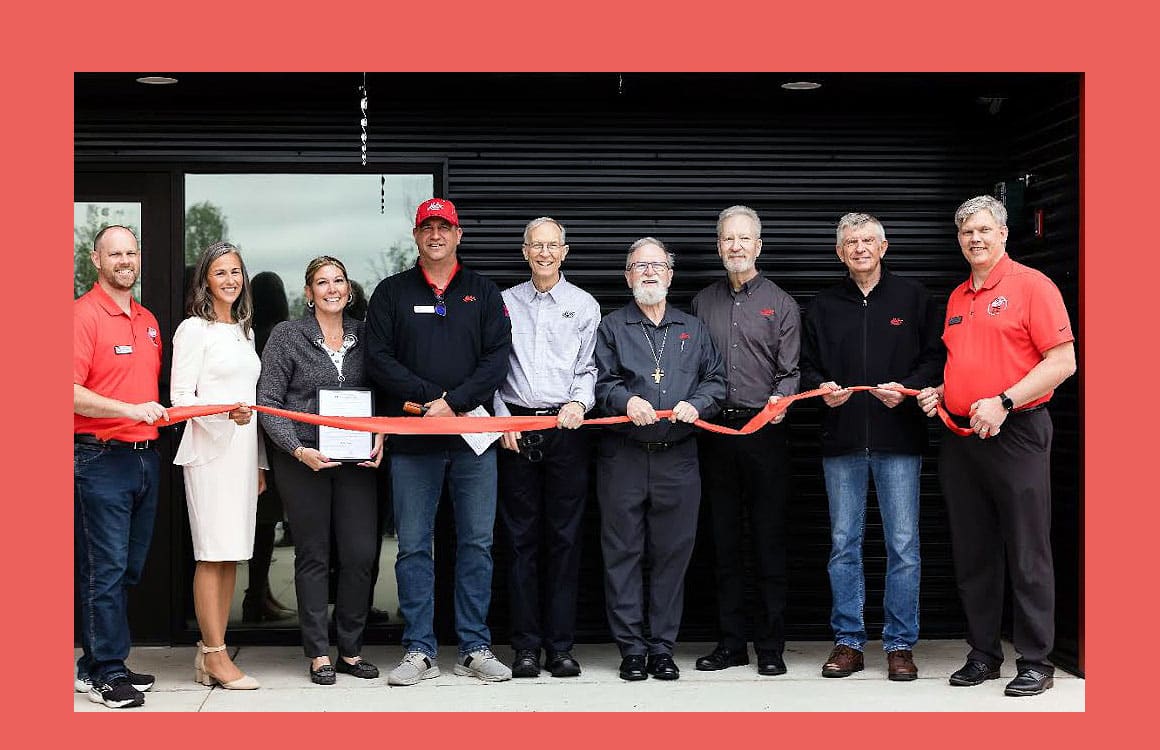This tech tip is based on a recent podcast with Eugene Silberstein from ESCO Group. Even though we cover a lot of similar ground, this tech tip is unique and comes with several links that could help anyone who wants to start or improve an internal training program. If you haven’t yet listened to “How and Why to Create an Internal Program w/ Eugene S.,” you can listen to it on the HVAC School website HERE or on your favorite podcast app.
If you’ve been following HVAC School for a while, you may have seen bits and pieces of the Kalos internal training program. We’ve had some great senior techs, including Bert, lead training sessions about crucial HVAC/R topics, and we post those videos so that anyone can learn from them. But there may come a time when you want to create your own internal training program for your technicians.
Many senior techs and HVAC/R business owners have asked us how they can build an in-house training program for their own companies. There isn’t a single correct way to do it, as training is complicated, and good training depends on many different things.
So, we recently released a podcast with Eugene Silberstein from ESCO Group about developing an in-house training program. Eugene is one of the greatest educators our industry has to offer, and he teaches a top-level training course called “Becoming an Effective Trainer,” which you can take through ESCO Group’s e-learning network and earn NATE credits. Even though we didn’t get into the level of detail he provides in his course, he still gave a lot of good food for thought, and I’d like to share it with you all.
Why conduct in-house training?
Simply put, in-house training puts your company at a huge advantage. Having your own program gives you a lot more control over your company’s training structure, allowing you to tailor the content to your trainees’ strengths and weaknesses. Training is one of the most valuable investments you can offer your employees, as they can do better work, get more fulfillment out of a job well done, and reduce callbacks.
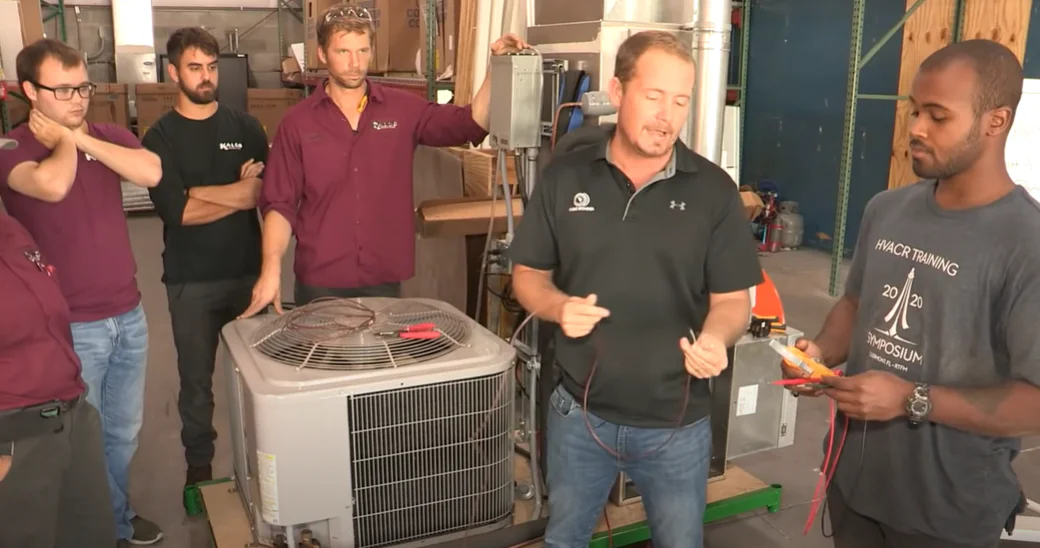
While you can instruct your trainees to watch educational videos by reputable HVAC/R content creators or watch webinars, you can’t guarantee that your trainees will simply find the content they need. You probably won’t get the best training outcomes if you just hand off resources to your trainees and turn them loose.
A structured in-house training program ideally creates time for your trainees to learn important concepts and skills from someone who knows how to teach those things. Keep in mind that there is a pretty big difference between knowing things and teaching them. (We’ll talk about that later.)
Another underrated aspect of internal training is its ability to bring you closer to your employees and bring them closer to each other. The HVAC/R life is busy, and employees probably don’t get a lot of time to talk to you or each other when they’re on the clock. However, if you set aside some time for your employees to sit down and learn something together, they’ll start talking to each other. Having that rapport between your trainees can improve overall morale and build a sense of community in your organization.
Organizations with effective in-house training programs will be more likely to keep their employees happy. Employees who are happy and actively making progress in the organization will be more likely to stay with the organization for the long haul.
Why is it hard to build an effective internal training program?
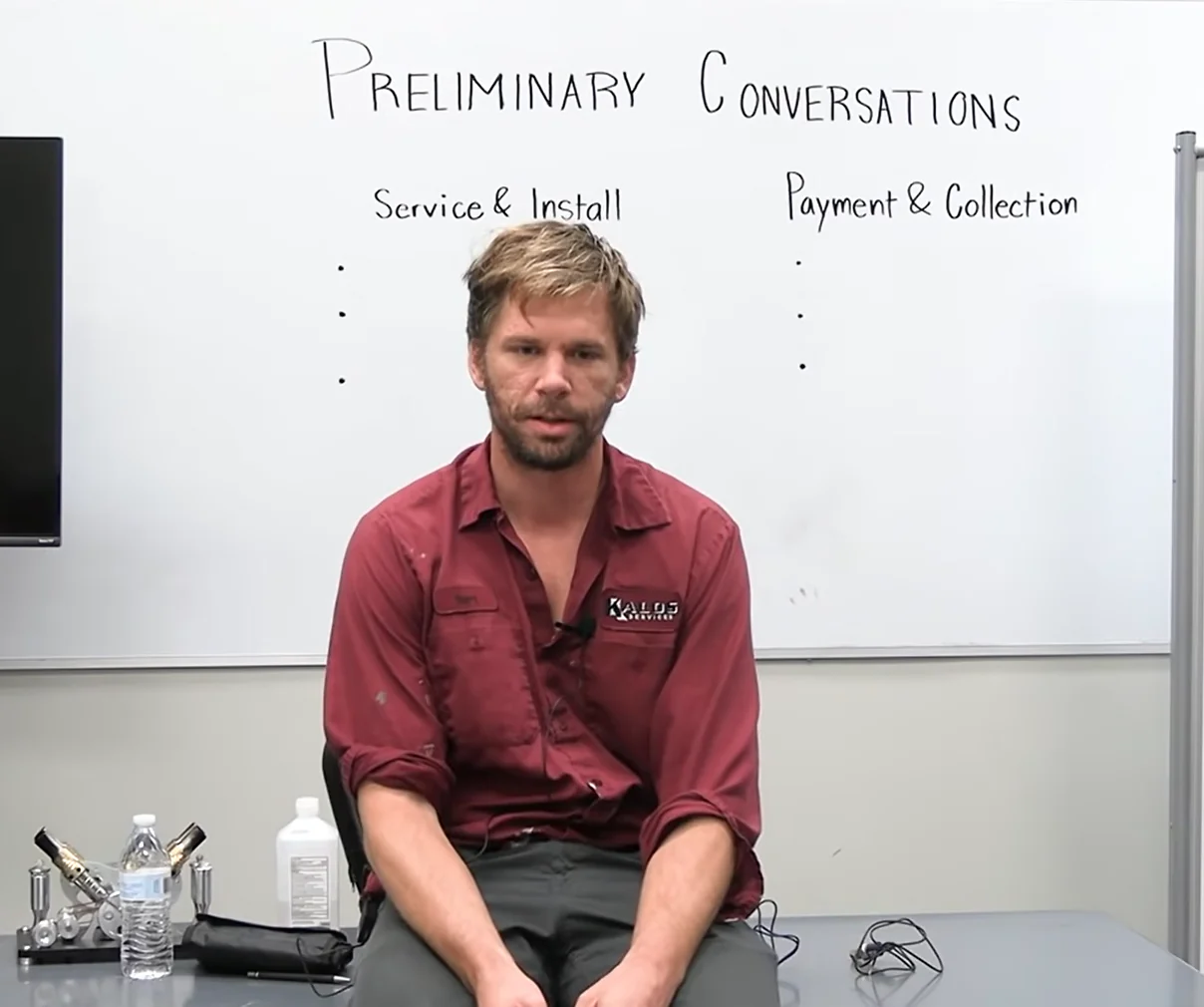
Now, all of those benefits sound great. But why do so many business owners and trainers struggle to get their in-house training programs off the ground? Why do some programs have poor learning outcomes?
The truth is that building an effective internal training program can be difficult and even expensive—in terms of money and time. You may need to invest in yourself as an instructor; just because you know something doesn’t mean you can teach it effectively, and that investment may require time and money. In-house training also reduces your trainees’ billable hours in the field.
Trainees may also be skeptical of the benefits that in-house training has to offer, especially as opposed to something like an accredited trade school program. It really requires a commitment on your part to show your trainees that you are creating an in-house program for their benefit—to help them build fulfilling careers that can sustain their choice of lifestyle (e.g., providing for their families).
In short, training, education, and growth have to be ingrained in your company culture for your in-house training program to succeed and provide real benefits to your trainees. Communication and commitment make up the company culture, and often, a weakness in one of those areas will be the downfall of an in-house training program.
So, how do you develop a culture of training, education, and growth? How do you stick to your commitment and ensure that you have strong communication?
Understand what makes a good trainer

Training is not just about education; many people with a lot of knowledge end up being poor trainers or teachers because they don’t know how to keep their trainees engaged. Technical knowledge is just a fraction of effective training; so much of it comes down to psychology.
Eugene Silberstein says that there are three “Es” to training, and education is the last part of it. A trainer needs to be able to engage and entertain their trainees to train effectively. There is more to engaging and entertaining your trainees than holding their attention; a trainer’s ability to engage and entertain their trainees will affect learning outcomes and influence the trainees’ willingness to participate in the training program.
There are two main ways we can engage trainees:
Understand what your trainees want
Trainees likely won’t be on board with a training program if they don’t see how they can benefit from it. Whether you want to develop a training program based on technical or leadership skills (or both), you’d greatly benefit from standing in your trainees’ shoes and trying to understand what they want.
In many cases, people are financially motivated and want to learn skills that maximize their earning potential. These people will get the most out of an in-house training program if the trainer can teach them something that can help them reach their financial goals.
Assuring your trainees that you’re here to help them achieve their goals isn’t as simple as saying, “You can apply this knowledge and achieve goals x, y, z.” Trainees will know that you’ve really invested in them if you can create a plan or roadmap showing them what the training will help them achieve in the short term and long term. What promotions and other opportunities will open up to them after they learn certain skills or earn certain certifications?
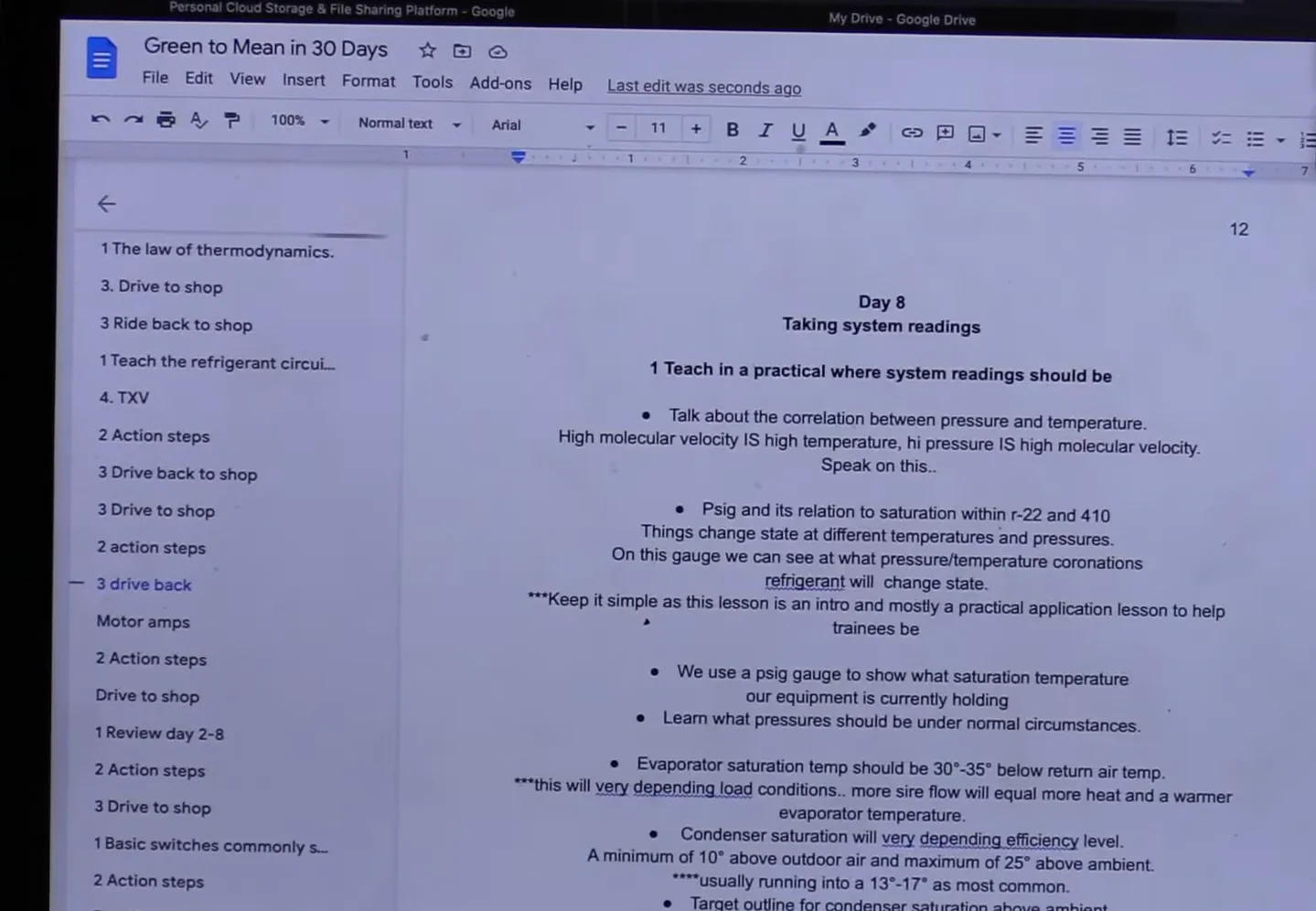
Bert’s step-by-step training program for new techs: “Green to Mean in 30 Days”
Many trainees like having practical, achievable plans laid out in front of them. If you take the time to map out those plans, your trainees will understand how much you have invested in them and will be more likely to invest in themselves by engaging in your training.
Understand what your trainees are afraid of
We can also make better internal training programs if we address the things that make trainees want to avoid training.
Training sessions can make people feel vulnerable; many people are afraid of asking “stupid questions” and feel bad when trainers say, “You should’ve already known that,” or, “Maybe you should go back to school if you don’t already know the answer.” Those are unpleasant situations that trainees naturally want to avoid.
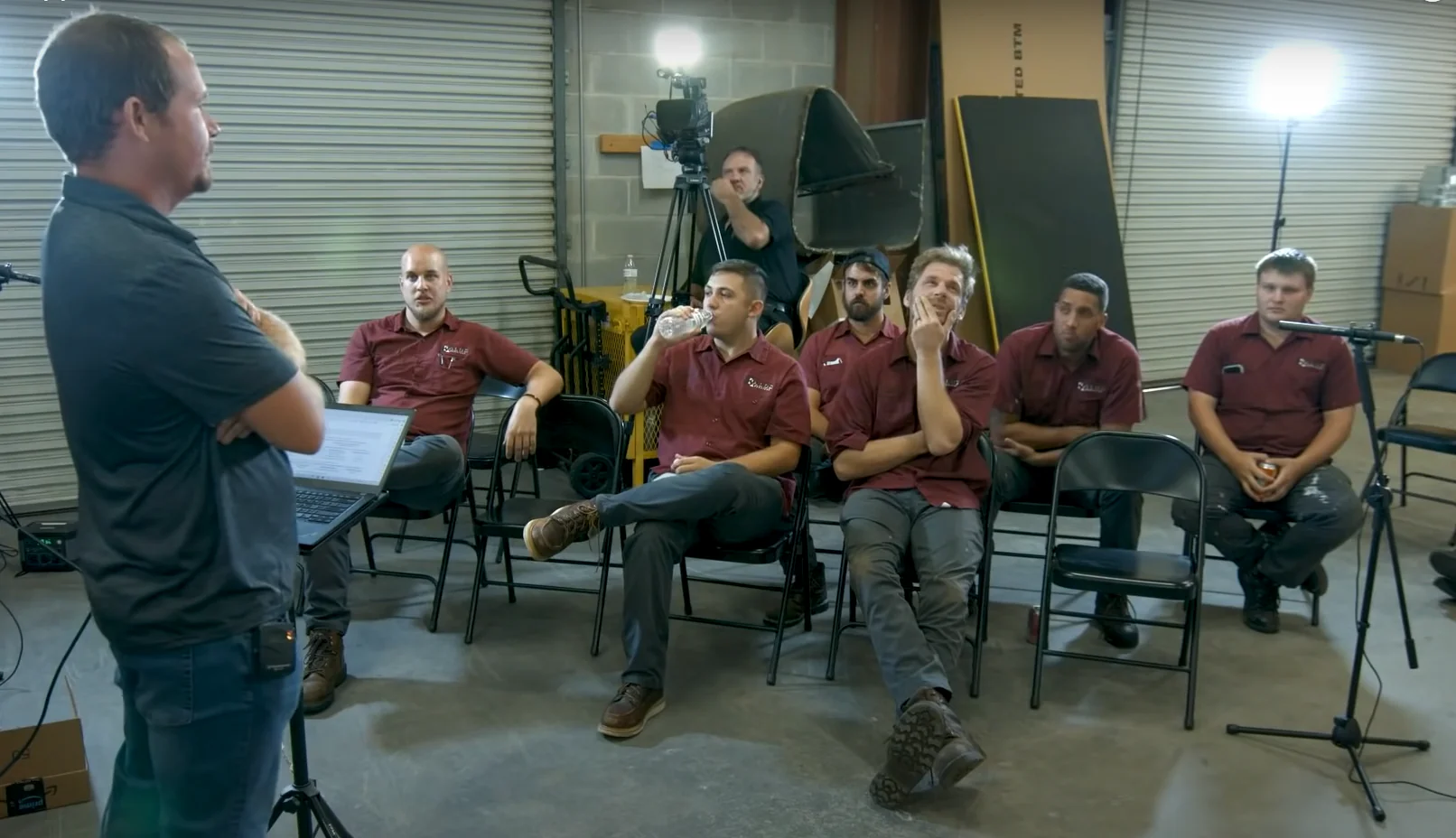
If our in-house training programs can make people feel safe to ask questions and be wrong at times, then we can expect people to buy into them and get the most out of their training.
At Kalos, we’re lucky to have Bert lead our in-house training. He may not be an “educator” with fancy credentials, but he knows his stuff and naturally works well with others, which are the top two things you want in a teacher. Bert wants people to feel comfortable asking questions and eager to do better work. Ty Branaman is another great example of an instructor who makes people feel safe and excited about learning, not afraid of being singled out and insulted for not knowing the answer.
People like Bert and Ty know how to get their trainees to let their guard down, ask questions, and enjoy the training. A big part of making training entertaining is making it a pleasant experience. An instructor doesn’t have to be over-the-top energetic and funny, but they will get better outcomes if they can make training a surprisingly enjoyable experience rather than a stressful one.
Keep things interesting for your trainees, but stay consistent
Even though having a routine is a good thing, training programs get stale really quickly if trainees go into the same room, sit down for the same amount of time, and watch presentations about the same general topics every single time.
Don’t be afraid to spice things up a bit! If trainees know what to expect every time they go into a training session, they probably won’t be as curious about the training. However, if you have training classes on a variety of topics in a few different formats or throw in some interactive activities, your trainees will probably be a lot more curious to see what the session has in store for them. (We previously wrote about some tips to spice up your training HERE.)
Now, that doesn’t mean you’re disorganized. Some of the best trainers appear to be spontaneous but have truly deliberate lessons. Good trainers know how and when to do surprising things in their sessions.
Some of those pleasant surprises can come in the form of unexpected hands-on training. Since we work with our hands every day, it only makes sense that trainees should learn how to do the things they’re supposed to be learning. Trainees can also feel fulfilled by learning a new practical skill they can start using in the field immediately.
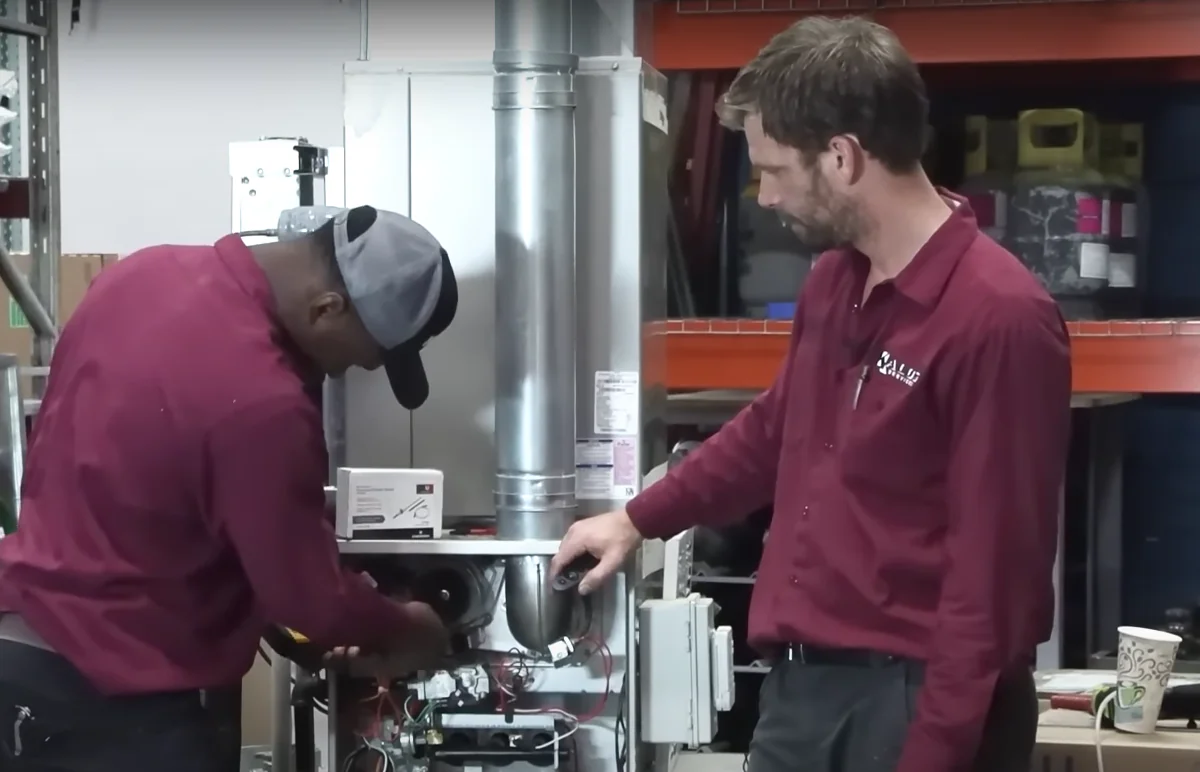
Now, just because a training program is full of surprises, that doesn’t mean the schedule should be. Consistency is key; if you say you’re going to have training every Friday, then be sure to follow through and have training every Friday. Consistent training programs allow trainees to set a specific time slot aside each week to invest in themselves. It also shows your commitment to the trainees’ growth, which makes them trust the program.
I don’t think I’m the right person to head my company’s in-house training right now. What can I do?
It takes a lot of courage to acknowledge that you may not be ready to develop your company’s in-house training. Maybe you don’t feel comfortable as a trainer, or maybe you can’t lead training sessions consistently due to your schedule.
It’s okay to take the time to invest in yourself and wait until you have the time, money, and energy to do an internal training program right. You can also look into the talent within your organization and outside of it. If you have someone like Bert, Craig Migliaccio (AC Service Tech), or Ty Branaman inside your organization, you might see if they would be willing to spearhead an in-house training program.
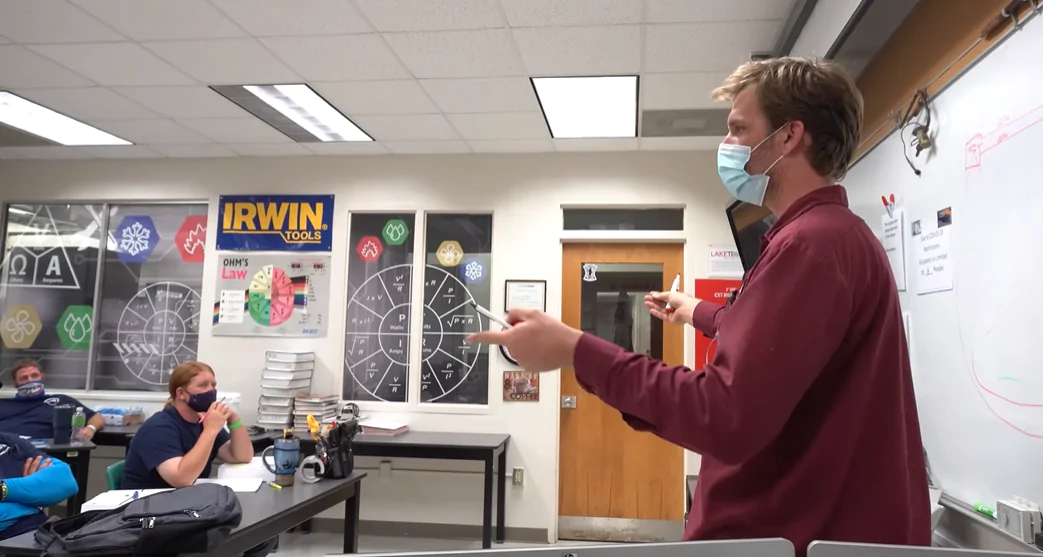
If you don’t have anyone inside your organization, see if you can partner with local trades education facilities. Some external training programs can also come to you, like Dirk Nauman’s HVAC Simulator (also available online through the ESCO Group e-learning network).
If, on the other hand, you have a solid program and want to get into web-based training to help others, you may be interested in THIS free webinar by Clifton Beck. (You can also earn free NATE credits by watching it.)
What resources are available to organizations that want to make or improve their in-house training programs?
Developing an internal training program is tough, and ESCO Group’s e-learning network has a few courses and webinars that can help you or your senior techs become better trainers and produce better learning outcomes.
As said earlier, Eugene Silberstein’s “Becoming an Effective Trainer” course is one of the best resources you can find to develop your own talents as an educator. You can also get 4 NATE hours if you complete the course. The course costs $59.95 by itself, but it’s included in the All-Access Subscription Bundle, which has several other high-value courses and costs $19.95 per month. You can learn more at https://hvacrschool.com/effective-training.
ESCO Group also offers some free webinars, including ones that teach you how to control your classroom and improve learning outcomes. These webinars are free to anyone who watches them, but you can obtain NATE hours by completing a quiz for a small fee.
If you’re interested in several courses mentioned in this tech tip and many more HVAC/R courses, it’s a good idea to see if an ESCO All Access Subscription might be worthwhile. You can learn more at

https://hvacrschool.com/esco-all-access.
All of that is just to say that you can’t just make a good in-house training program overnight. In-house training is an ongoing investment that requires an understanding of what your trainees want and what an effective trainer really does. But, if you stay committed to the cause and are willing to invest in your trainees, you can create an effective training program for your HVAC/R business.
Co-Founder and President at Kalos Services, Bryan Orr has been involved in HVAC training for over 13 years. Bryan started HVAC School to be free training HVAC/R across many mediums, For Techs, By Techs.
Contact Bryan by emailing bryan@HVACRSchool.com.
Visit https://hvacrschool.com – The place to learn some things you’ve forgotten along the way as well as remind you of some things you forgot to know in the first place.



